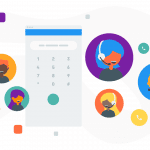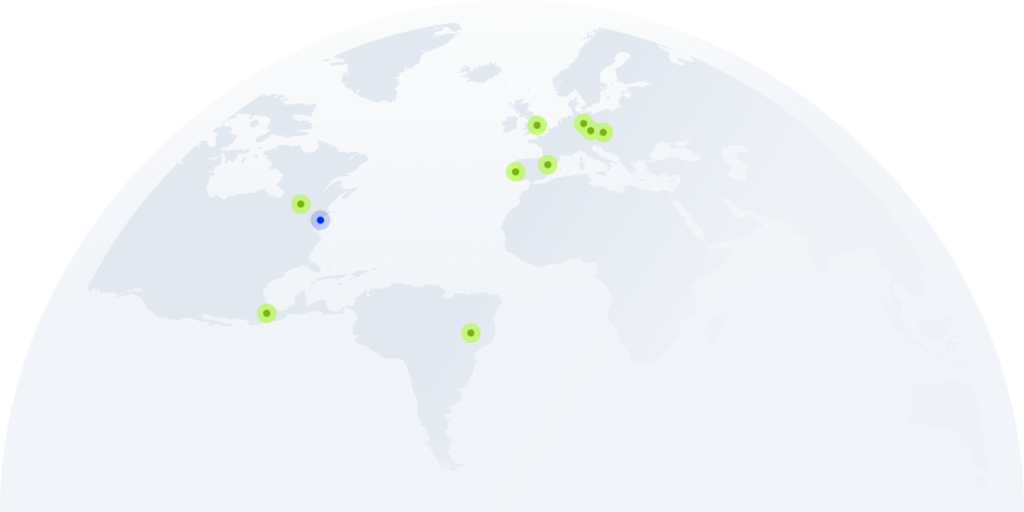What is DID (Direct Inward Dialing)

Telecommunications have come a long way in the past few decades. It wasn’t too long ago that businesses had to use expensive landlines in order to communicate with each other. These days, there are a number of different telecommunications options and services available to make things more efficient. One of them is Direct Inward Dialing, or DID.
If you’re not sure how to use DID, don’t worry – we’re here to help. In this guide, we’ll show you how to direct inward dial and get connected with the person who you are seeking for. Moreover, we’ll highlight some of the specific benefits of DID for your company.
What is Direct Inward Dialing?
DID is a service that allows businesses to have their own unique phone numbers for a variety of purposes, such as customer support or sales. When someone calls a DID number, they will be immediately routed to the desired extension.
Direct Inward Dialing (DID) enables you to forward calls directly to a specific number instead of having to:
- listen to an IVR menu and choose from the options
- wait in a queue to be connected
- dial an extension
Interestingly, in Europe this service is often better known as Direct Dial-In (DDI).
Upgrade your call center tools for better communication!
In order for DID to work, you need SIP trunks. As opposed to physical trunk lines used with PSTNs, VoIP uses Session Initiation Protocol (SIP) trunking, which only makes the trunk line connections available when they are being used.
A SIP provider can use SIP trunks to connect one, two, or as many channels as you want to your PBX, giving you the option to make local, long-distance, and international calls over the Internet. You can also connect your existing PBX set to a SIP trunk provider so that you can make outbound calls on your current system without any restrictions.
How does Direct Inward Dialing work?
Direct Inward Dialing works in two different ways. While they are similar, the second method is much more popular nowadays. You’ll see why in a moment.
#1 Within PBX
The term Direct Inward Dialing previously referred exclusively to a network within a PBX. In this case, DID numbers were a group of numbers connected to a PBX rather than to each individual phone.
The physical telephone lines are referred to as trunks of limited capacity. Each line is designated to serve a few numbers. Consequently, it doesn’t matter how many numbers you have in an office. If you run only five lines, you could make or receive five calls at a time. Although this seemed convenient at first, it quickly became obvious that it is not the most efficient way of handling inbound calls.
#2 With VoIP
You simply set up the forwarding number(s) in advance with your telephone company. When someone calls your main number, their call will automatically be forwarded to the number(s) you’ve specified. You can even have different forwarding numbers for daytime and nighttime hours.
The difference between PBX and VoIP is that with PBX, you had to physically allocate new phone lines to a PBX system. With VoIP, getting a new phone number is just a matter of contacting your VoIP provider. You can have new lines added within the same day.
Besides the convenience of adding new numbers quickly, VoIP brings many other benefits. Primarily, it opens up the possibility to have a virtually unlimited number of calls at once, all through a digital system, rather than an outdated analog PBX network.
For most companies nowadays, VoIP is much cheaper and more efficient than having DID with a PBX system. There is lots of room for flexibility, too. You’re not locked into a contract with just a certain number of lines for your business.
What is a DID number?
DID allows you to have calls forwarded directly to a specific number. A DID number is assigned to a person, department, or function within a company.
Unlike traditional phone numbers tied to a particular location, DIDs can be forwarded to any phone, regardless of where it is situated. This way, when someone calls a company’s main phone number, they can be connected directly to the desired person or department.
Here is an example.
You can get DID with different numbers of digits, from 1 to 7. Let’s use 5 as a simple example. If you need 100 numbers, it’s a pretty easy setup. Your phone provider can give you numbers starting with
(00) 50000
(00) 50001
(00) 50002
Etc. until you reach 100. Of course, you can get your own combination of preferred numbers as well.
You may want to redistribute it as follows:
- The first digit after 5 indicates the department (e.g. sales – 0, service – 1, technical support – 2).
- The second digit after 5 indicates the individual (e.g. regional sales director – 1, sales analyst – 2).
This way, if you wanted to contact, say, Carl from the sales department calling from outside, you know that his number will be (00) 50001. Whereas if Carl happened to be your teammate in the same office using the same PBX, you would just need to dial 01 to get in touch with him. There would be no need to wait, request redirection, or guess what his number might be.
The best part? To get these additional numbers, you don’t have to wait for weeks on end. Just get in touch with your chosen VoIP provider and you can have new DID numbers within the same day.
Because it’s just a matter of adding virtual numbers to your account, the entire process is seamless. There is no need for complex processes that are common for PBX.
Do you need Direct Inward Dialing?
While not essential, DID numbers can be extremely helpful in many situations.
It brings you:
- Flexibility: If you have customers or clients located in different time zones, DID is a lifesaver. With it, you can forward calls to your office line during working hours and to your cell phone outside of them. This ensures that you’re always available to take calls, no matter the time of day.
- Practicality: Direct Inward Dialing can also be helpful if you have a lot of employees who need to be reachable via phone. By assigning each employee their own DID number, customers and clients will always be able to reach the person they need to talk to without having to go through a lengthy phone tree.
- Availability: DID can also be useful in case of emergencies. If your office line is down, you may have calls forwarded to another number so that customers and clients can still reach you.
Direct Inward Dialing benefits
If you’re still on the fence about whether or not you need DID, below are some significant benefits. We have already hinted at some above, but let’s take a deeper look into them..
#1 DID gives you a lot of flexibility
As we briefly mentioned, DID is a very flexible service. It can be customized to fit your specific needs. For example, you can have calls forwarded to different numbers during different times of the day, or you can forward calls to multiple numbers at the same time.
You can even set up call forwarding so that if someone dials your office line and you don’t answer, the call will be forwarded to your cell phone. This way, you’ll never miss a call, no matter where you are.
#2 DID provides a more professional appearance
By allowing customers to reach specific employees without going through your main phone line, you can give your business a more professional appearance. This is especially helpful if you have a small business or if you work from home.
By having a DID number, you will appear as a proper, larger business to your customers – even if you’re a startup with a few employees. This can give them more confidence in doing business with you. It also eliminates the need for customers to remember multiple extension numbers.
#3 DID generates significant savings
DID is also a great way to save your money. First of all, it eliminates the need to have a separate phone line for each employee.
If you have employees who work from home or who travel often, you can have their calls forwarded to their mobile phones so that you don’t have to pay for long-distance charges. DID can also save you money on your phone bill by allowing you to choose a local number, even if your business is located in another city.
How do I get DID?
The starting point is to use a great call center tool that has an embedded DID feature, such as CloudTalk. Once you have that part figured out, think of all the numbers you want in your system and ask your call center provider to help you out.
As part of your onboarding process, you’ll be prompted to share your requirements. Once your call center is up and running, you can have separate extensions for each of your employees by using CloudTalk’s call center software.
Initially, you’ll need to choose your business phone numbers. You don’t want to get new ones? In CloudTalk, we’ll be happy to port your existing phone numbers so they’re ready to use with VoIP.
Once your main numbers are in CloudTalk, we can help you determine how many DID lines you need for your business based on your requirements.
Wrapping up
DID is a piece of call center technology that not only makes it easier for your customers to reach you, but also takes weight from your employees’ shoulders. If your day-to-day operations depend on calling, DID is a natural step forward.
Speaking of steps forward, why not start with the best call center tool out there? Sign up for a free trial of CloudTalk to enjoy Direct Inward Dialing and make use of 70+ other features.
We will make your business flourish and your customers happier.

















